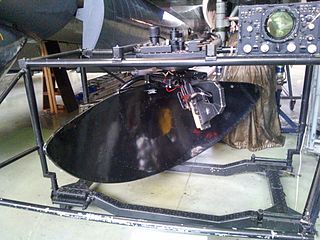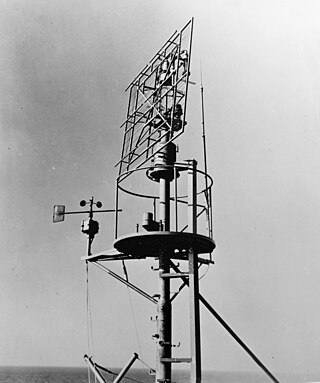
The County class was a class of British guided missile destroyers, the first such warships built by the Royal Navy. Designed specifically around the Seaslug anti-aircraft missile system, the primary role of these ships was area air defence around the aircraft carrier task force in the nuclear-war environment.

The Daring class was a class of eleven destroyers built for the Royal Navy (RN) and Royal Australian Navy (RAN). Constructed after World War II, and entering service during the 1950s, eight ships were constructed for the RN, and three ships for the RAN. Two of the RN destroyers were subsequently sold to and served in the Peruvian Navy (MGP). A further eight ships were planned for the RN but were cancelled before construction commenced, while a fourth RAN vessel was begun but was cancelled before launch and broken up on the slipway.

The Arethusa class was a class of four light cruisers built for the Royal Navy between 1933 and 1937 and that served in World War II. It had been intended to construct six ships, but the last pair, Polyphemus and Minotaur, were ordered in 1934 as the 9,100-ton Town-class Southampton and Newcastle.

The Type 41 or Leopard class were a class of anti-aircraft defence frigates built for the Royal Navy and Indian Navy in the 1950s. The Type 41, together with the Type 61 variant introduced diesel propulsion into the Royal Navy, the perceived benefits being long range, low fuel use, reduced crew, and reduced complexity.

The Type 61 Salisbury class was a class of the Royal Navy aircraft direction (AD) frigate, built in the 1950s. The purpose of the aircraft direction ships was to provide radar picket duties at some distance from a carrier task force and offer interception guidance to aircraft operating in their area.

A radar picket is a radar-equipped station, ship, submarine, aircraft, or vehicle used to increase the radar detection range around a nation or military force to protect it from surprise attack, typically air attack, or from criminal activities such as smuggling. By definition a radar picket must be some distance removed from the anticipated targets to be capable of providing early warning. Often several detached radar units would be placed to encircle a target to provide increased cover in all directions; another approach is to position units to form a barrier line.

The Rothesay class, or Type 12M frigates were a class of frigates serving with the Royal Navy, South African Navy and the Royal New Zealand Navy.

The J, K and N class consisted of 24 destroyers built for the Royal Navy beginning in 1938. They were a return to a smaller vessel, with a heavier torpedo armament, after the Tribal class that emphasised guns over torpedoes. The ships were built in three flotillas or groups, each consisting of eight ships with names beginning with "J", "K" and "N". The flag superior of the pennant numbers changed from "F" to "G" in 1940.

Ship gun fire-control systems (GFCS) are analogue fire-control systems that were used aboard naval warships prior to modern electronic computerized systems, to control targeting of guns against surface ships, aircraft, and shore targets, with either optical or radar sighting. Most US ships that are destroyers or larger employed gun fire-control systems for 5-inch (127 mm) and larger guns, up to battleships, such as Iowa class.
Radar in World War II greatly influenced many important aspects of the conflict. This revolutionary new technology of radio-based detection and tracking was used by both the Allies and Axis powers in World War II, which had evolved independently in a number of nations during the mid 1930s. At the outbreak of war in September 1939, both Great Britain and Germany had functioning radar systems. In Great Britain, it was called RDF, Range and Direction Finding, while in Germany the name Funkmeß (radio-measuring) was used, with apparatuses called Funkmessgerät . By the time of the Battle of Britain in mid-1940, the Royal Air Force (RAF) had fully integrated RDF as part of the national air defence.

HMS Meteor was a M-class destroyer built for the Royal Navy during World War II.
The Type 79 radar was a British naval early-warning radar developed before World War II. It was the first radar system deployed by the Royal Navy.

The Type 281 radar was a British naval early-warning radar developed during World War II. It replaced the Type 79 as the Royal Navy's main early-warning radar during the war.

HMS Savage was an S-class destroyer of the Royal Navy launched on 24 September 1942. The vessel was adopted by the town of Burton upon Trent. Savage differed from the rest of the class in being fitted with a new 4.5-inch (114 mm) gun, with a twin mounting for the QF Mk III gun forward and two single QF Mk IV guns aft. The twin mount was taken from spares for the aircraft carrier Illustrious. Initially serving as part of the destroyer escort screen for capital ships, Savage joined Operation Camera off the Norwegian coast, an unsuccessful diversionary expedition to distract the enemy from the invasion of Sicily, and escorted King George V from Gibraltar to Scapa Flow. However, for the majority of the ship's career, Savage escorted convoys to the Soviet Union. In December 1943, the destroyer took part in the Battle of the North Cape which saw the destruction of the German battleship Scharnhorst. After the war, Savage was refitted as gunnery training ship. The ship was decommissioned and, on 11 April 1962, sold to be broken up.

The Type 291 radar was designed as a search radar for ships destroyer-sized and smaller in 1942. By the end of the Second World War it had been installed in almost every British and Commonwealth destroyer and escort ship as well as many submarines, naval trawlers, and motor torpedo boats. Some sets were furnished to the Soviet Union for their destroyers as a part of Lend-Lease.

The Type 293 radar was designed as a short-range aerial-search radar for surface ships in 1945. It used the same transmitter as the Type 277 surface-search radar, but used a new antenna design intended to cover the area above the ship to provide air warning instead of surface search. The stabilised "cheese" antenna, 6 feet (1.8 m) diameter in the AUR antenna, was upgraded to 8 feet (2.4 m) in Type 293P and to 12 feet (3.7 m) in the postwar Type 293Q.

The AN/APS-20 was an airborne early warning, anti-submarine, maritime surveillance and weather radar developed in the United States in the 1940s. Entering service in 1945, it served for nearly half a century, finally being retired in 1991. Initially developed at Massachusetts Institute of Technology (MIT) under Project Cadillac, the radar was developed to be carried by aircraft to extend the sensor range of ships by placing a radar at altitude. Although developed for carrier-borne operation, first being installed in the single-engined General Motors TBM-3W Avenger, it was also used in larger four-engined airframes, the last being a fleet of Avro Shackleton AEW.2 which were converted from maritime patrol aircraft. Similarly, although developed for detecting aircraft, it saw extensive service in anti-submarine and maritime patrol roles and was one of the first radars to be used in researching extreme weather like hurricanes by agencies like the Environmental Science Services Administration (ESSA). As well as the United States, the radar was used by a large number of services in other countries, including the French Navy, Japan Maritime Self-Defense Force (JMSDF), Royal Air Force (RAF) and Royal Canadian Air Force (RCAF). Early versions of the radar could see a low-flying aircraft at 65 nautical miles and a ship at 200 nautical miles. This was improved, so that later versions had a range against aerial targets of 115 nautical miles.

AN/SPS-29 is a two-dimensional radar that was manufactured by General Electric. It was used by the US Navy as a early warning radar after World War II, and was equipped aboard naval ships during the Cold War. Variants include AN/SPS-29A, AN/SPS-29B, AN/SPS-29C, AN/SPS-29D and AN/SPS-29E. After modernization, it was redesignated as AN/SPS-37.

SC was an American-made air and surface-search radar used during World War II by the United States Navy. Variations include SC-1, SC-2 and SC-3.